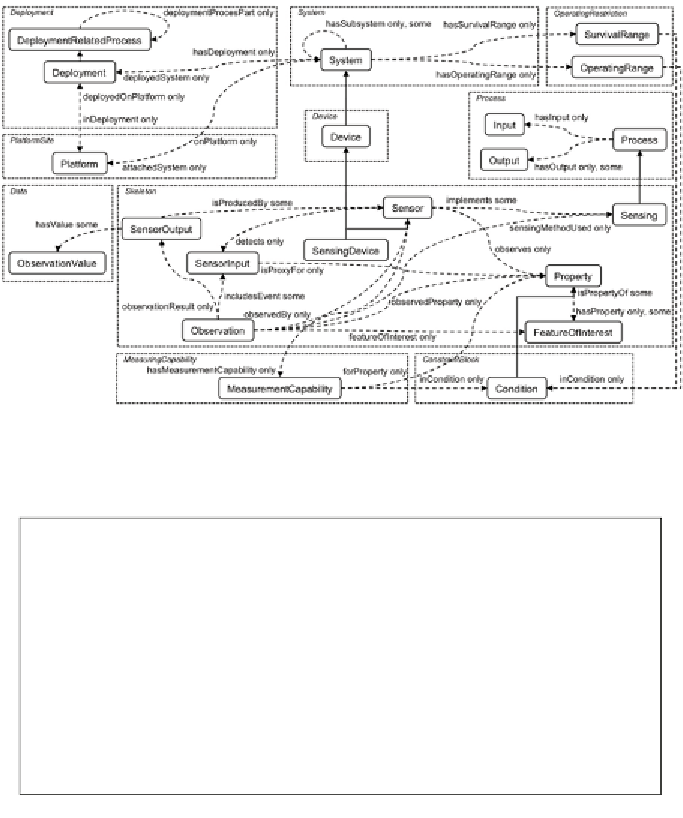Database Reference
In-Depth Information
those ranges. Finally, a structure for field deployments is included to de-
scribe deployment lifetimes and sensing purposes of the deployed macro
instrument.
Figure 12.5.
The Ten Modules in the SSN Ontology
<owl:Class
rdf:about
="
http://purl.oclc.org/NET/ssnx/ssn#SensingDevice">
<rdfs:label>
SensingDevice
</rdfs:label>
<rdfs:subClassOf
rdf:resource
="
http://purl.oclc.org/NET/ssnx/ssn#Device"/>
<rdfs:subClassOf
rdf:resource
="
http://purl.oclc.org/NET/ssnx/ssn#Sensor"/>
<rdfs:comment>
A sensing device is a device that implements sensing.
</rdfs:comment>
<rdfs:isDefinedBy>
http://purl.oclc.org/NET/ssnx/ssn</rdfs:isDefinedBy>
<rdfs:seeAlso>
</rdfs:seeAlso>
</owl:Class>
Figure 12.6.
Schema for the Sensor Class
SWEET:
The motivation for developing
SWEET
(
The Semantic Web
of Earth and Environmental Terminology
) stemmed from the realization
of making vast amounts of earth science related sensor data collected
continuously by NASA more understandable and useful [92]. This effort

